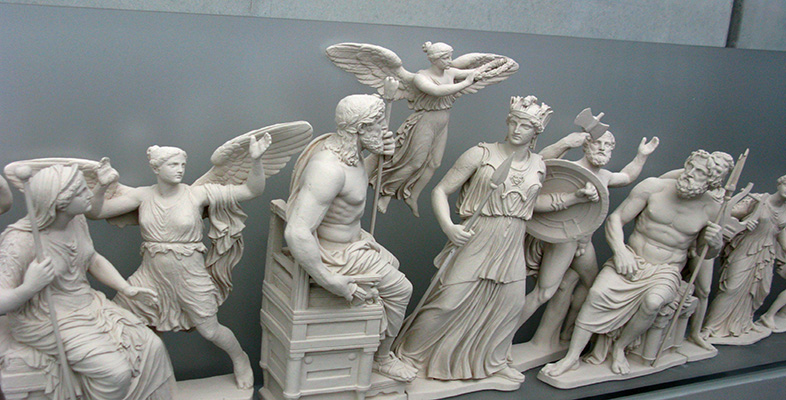5 Keeping body and soul together
In the ancient world, people asked themselves what the essence of the human body was, and how the physical side of it related to thoughts and feelings. It was philosophers especially who pondered this question, and they came up with a variety of answers. Take, for example, the account from the philosopher Plato’s work Phaedrus. Plato (c.428–c.348 BCE) often used dialogues – most often involving students talking to his former teacher Socrates – to present his views. In Phaedrus, Plato has Socrates engaged in a conversation with a man called Phaedrus. They are discussing the nature of love and how it affects the way people behave. In the course of this conversation Socrates explains his theory of the soul consisting of three parts. He uses the analogy of a charioteer, and two very different horses that are pulling the chariot.
Activity 4
Read Plato, Phaedrus [Tip: hold Ctrl and click a link to open it in a new tab. (Hide tip)] , on the Perseus ancient text website: (Sections 246a–247c; 253c–254e). Make sure to click through to the relevant sections by using the arrows above the text or the orientation bar above that. As you are reading, think about the following questions:
- What is the nature of the three different parts of the soul: the charioteer and the two horses? How do they interact with each other?
- How does the nature of the soul affect the body? What is their relationship to each other? Socrates is talking here about how the soul makes one behave towards a person one loves: how do the different parts of the soul react to the lover? What is considered ‘good’ and ‘bad’?
- Are there similarities with the way the soul is viewed in many western cultures?
Discussion
For Plato, the soul consists of three parts that are like a charioteer with winged horses. The charioteer represents reason, the beautiful and noble horse represents positive impulse – what we might call spirit – and the ugly and bad horse represents base nature, appetite and irrational passion. Plato imagines the conscious, rational part of human beings struggling to control the two ‘horses’ pulling in opposite directions: the good horse will always want to fly up to heaven, and the bad horse will want to drag the whole chariot down to earth.
In terms of the body, this means that one part of our soul is always reaching for noble and good deeds and a higher understanding. In terms of love, this means appreciating the beauty of the one who is loved and respecting their wishes and their bodily sanctity. The other part of the soul is where base instincts and appetites live – it will make the lover want to satisfy their sexual or emotional needs without consideration for higher ideals.
Although we may view the notion that the soul is like a charioteer with two horses as strange, in the western world we may find Plato’s basic division of a human into a natural body and a soul that determines its behaviour much less foreign than other cultures might. This is in part because the writings of people like Plato have had a direct effect on our civilisation. Even the notion of lofty ideals as opposed to base instincts is one that we are perhaps familiar with, and one that was carried through – among other things – into Christian philosophy.
